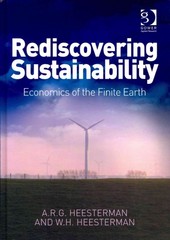Question
1.The Ricardian model of trade shows that that when two countries engage in free trade they can mutually benefit. Interestingly, this can be the case
1.The Ricardian model of trade shows that that when two countries engage in free trade they can mutually benefit. Interestingly, this can be the case even when one country is more efficient at producing everything. If this is true, why do we still observe sectors within countries that oppose free trade?
A)Imports are only restricted when foreign made goods do not meet domestic standard of quality
B)Import restrictions are the results of trade wars between hostile countries
C)Trade can have substantial effects on a country's distribution of income
D)The Ricardian Model is often incorrect in its prediction that trade can be mutually beneficial
E)Restriction on Imports are intended to benefit domestic consumers.
2.In the Ricardian Model, a country's production possibility frontier is ____ because ____.
A)a curved line, opportunity costs change along the line
B)a curved line, opportunity cost is constant along the line
C)a curved line, diminishing marginal returns
D)a straight line, opportunity cost is constant along the line
E)a straight line, diminishing marginal returns
3.Consider the Heckscher-Ohlin Model. A country produces two goods X and Y using two production factors A and B. A is used intensively to produce X, while B is used intensively in the production of Y. If the country's supply of B increases while A remains unchanged, the Rybczynski theorem predicts that...
A)The PPF of the country will not change in the long run
B)The production of X will increase while the production of Y will remain unchanged
C)The production of X will decrease while the production of Y will increase
D)Both the production of X and Y will increase
E)The production of X will remain unchanged while the production of Y will increase.
4.Consider the Heckscher-Ohlin Model. A country produces two goods X and Y using two production factors A and B. A is used intensively to produce X, while B is used intensively in the production of Y. If the relative prices of X increases, the Stolper-Samuelson theorem predicts that...
A)There change in relative prices will not affect the distribution of income within the country
B)The relative price of the production factor A will increase
C)The relative price of the production factor B will increase
D)The relative prices of products and production factors are not related
E)The price of production factor A will decrease
5.If engaging in free trade leads to a process of production specialisation within countries that generates winners and losers, then governments...
A)Should ignore the losers and focus on the winners
B)Should design and implement policies to compensate the losers and facilitate their transition to another sector/activity
C)Should avoid opening to free trade when the losers (or potential losers) have strong lobby power or have representatives in the government
D)Should rely on the good will and initiative of the winners to compensate the losers
E)Should always adopt protectionist policies to shield local industries from external competition
Step by Step Solution
There are 3 Steps involved in it
Step: 1

Get Instant Access to Expert-Tailored Solutions
See step-by-step solutions with expert insights and AI powered tools for academic success
Step: 2

Step: 3

Ace Your Homework with AI
Get the answers you need in no time with our AI-driven, step-by-step assistance
Get Started


